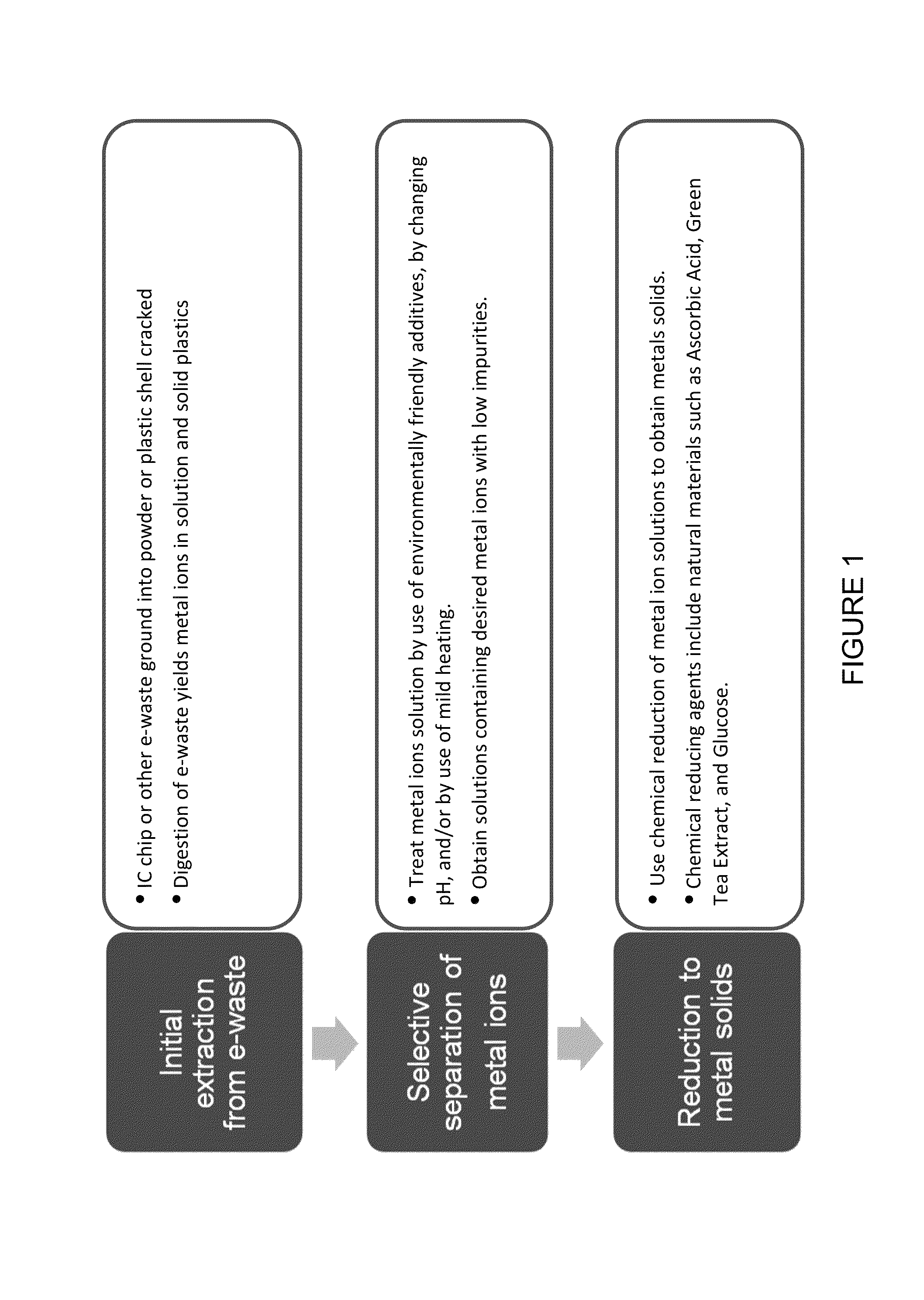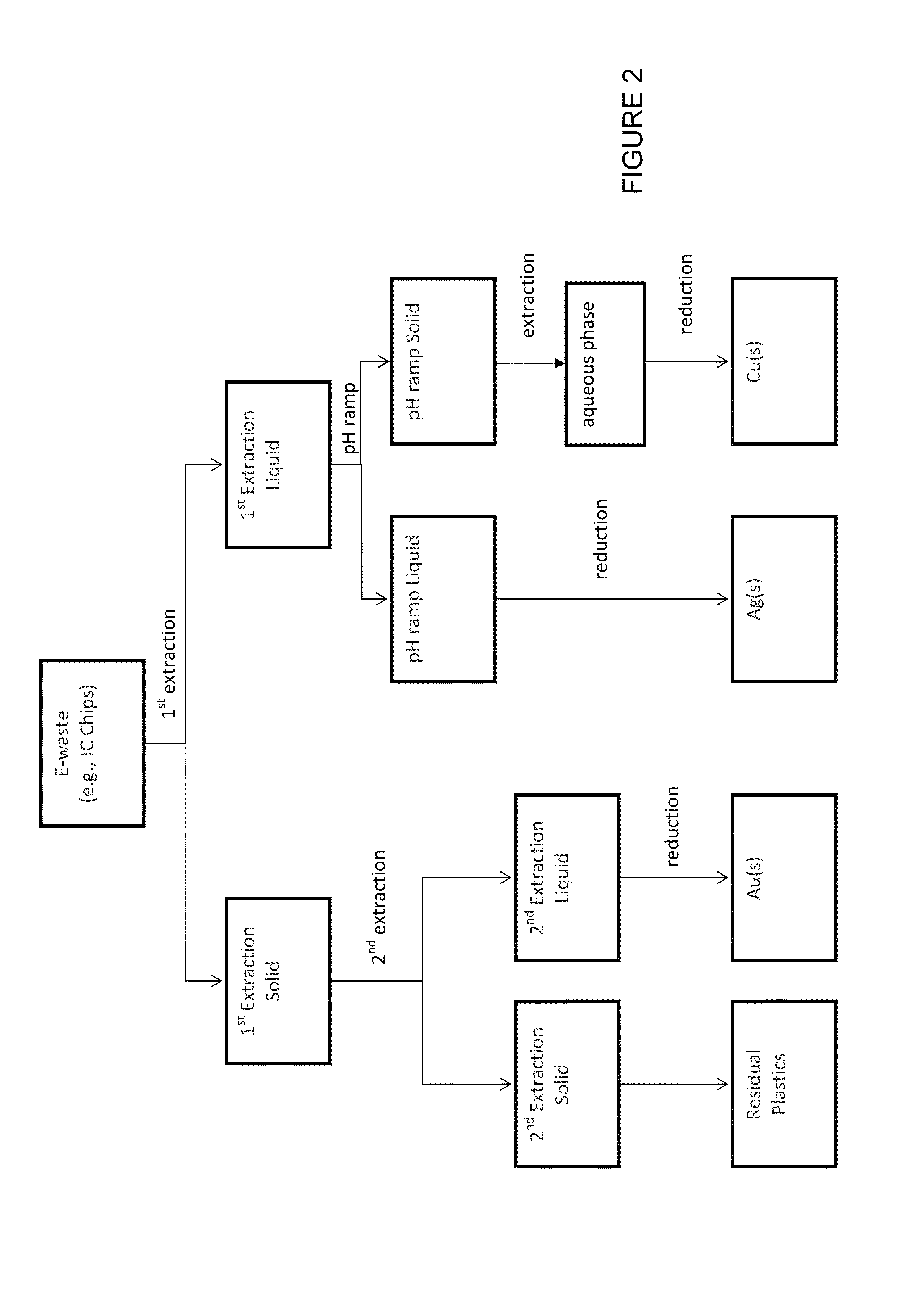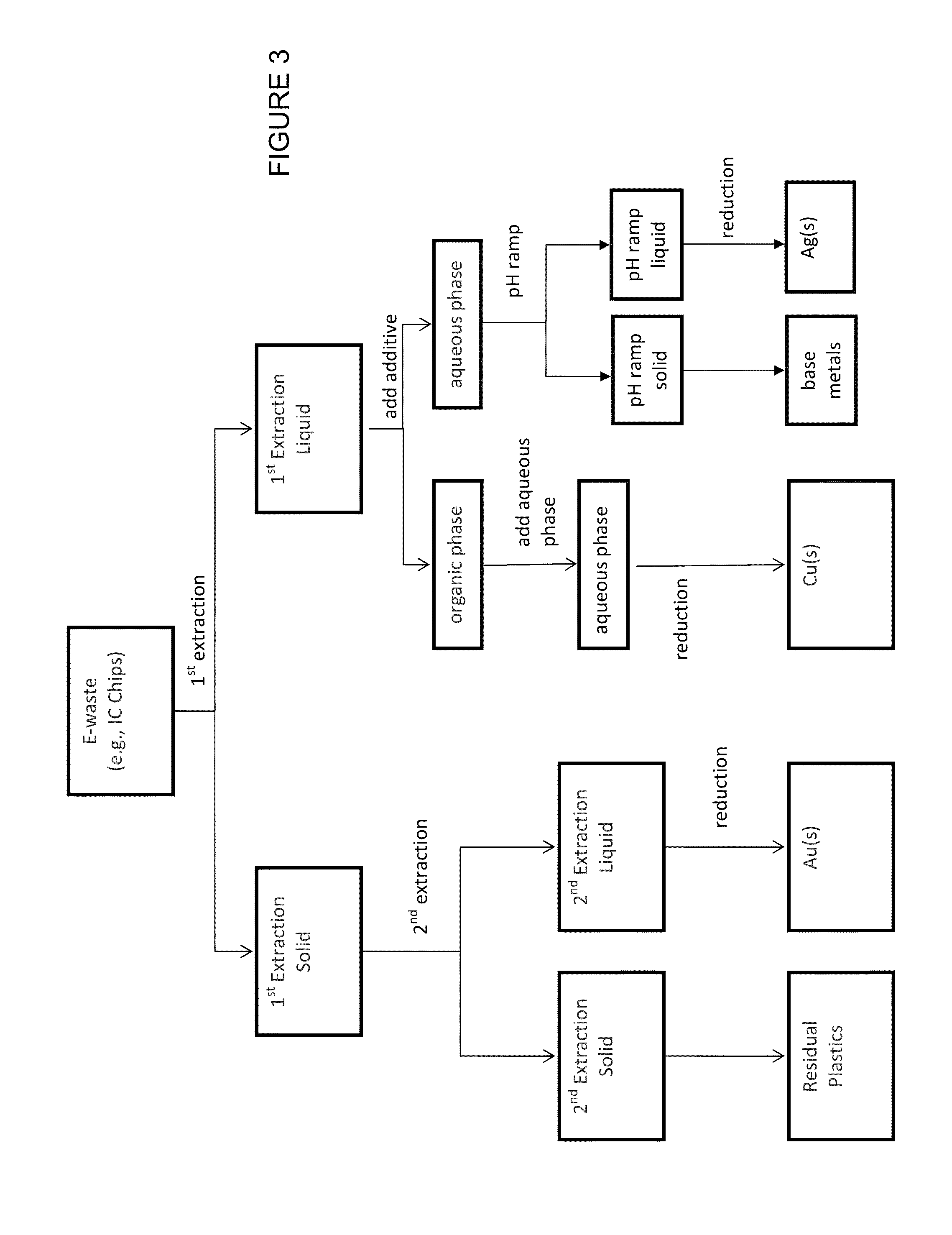Sustainable process for reclaiming precious metals and base metals from e-waste
a technology of e-waste and precious metals, applied in the direction of silver compounds, inorganic chemistry, dissolving, etc., can solve the problems of significant hazards improper disassembly poses appreciable risks to the health and safety of people performing manual disassembly, and pwb's are potentially difficult waste materials to process, so as to reduce each fraction of metal ions
- Summary
- Abstract
- Description
- Claims
- Application Information
AI Technical Summary
Benefits of technology
Problems solved by technology
Method used
Image
Examples
example 1
[0121]The first extraction of e-waste using variations of the first metal digestion composition described herein was performed. The e-waste was ground into a course powder. Single and multiple digestions of the powder were performed in duplicate and the first extraction compositions and the first extraction solids were analyzed using Inductively Coupled Plasma Mass Spectrometry (ICP-MS). All digestions were performed using 500 mg-10 g powder in 10 mL-200 mL of first metal digestion composition. Agitation occurred throughout the digestions. Digestion times ranged from about 30 minutes to about 135 minutes at temperatures in a range from about room temperature to about 50° C.
[0122]The first metal digestion compositions tested were as follows:[0123]Formulation A: Aqua regia (Control, 3:1 HCl:HNO3)[0124]Formulation B: 37% HCl:30% H2O2 (90%:10% by vol.)[0125]Formulation C: 37% HCl:30% H2O2 (90%:10% by vol.) with NH4Cl or NH4SCN[0126]Formulation D: 37% HCl:30% H2O2 (90%:10% by vol.+0.75 v...
example 2
[0145]Small scale serial extractions were performed using formulation D by extracting the e-waste at 50° C. for 30 minutes, followed by two additional extractions with clean formulation D for 30 min and 75 min. The results are shown in FIG. 4, wherein at 50° C. all metals except Au were strongly extracted in the first 30 minute extraction and 93% of the total mass of Au was extracted in the second 30 minute and third 75 minute extraction.
[0146]Large scale serial extractions (scaled 20 times relative to the small scale serial extraction) were performed using formulation D by extracting the e-waste at 50° C. for 30 minutes, followed by an additional extraction with clean formulation D for 105 min. The results are shown in FIG. 5, wherein better separation of the Ag and Cu from the Au was achieved at the larger scale.
[0147]Accordingly, serial extractions could be used to separated Ag and Cu from Au.
[0148]Then, starting with an aliquot of the small scale first extraction liquid of this ...
example 3
[0158]Once separated, for example as described in the description herein, the metal ions are preferably reduced to metal solid. Preferably, the reducing agent is a so-called environmentally friendly chemical. Moreover, preferably the reduction occurs rapidly with minimal heating requirements.
[0159]In order to gauge effectiveness of the reducing agents, the reduction of standard solutions of Au+3 (ICP gold standard in dilute HCl (approximately 0.05 M)), Ag+ (1 M AgNO3) and Cu+2 (1 M CuSO4) was performed. Environmentally friendly reducing agents were added to the standard solutions and time, temperature and pH were controlled. The pH was adjusted by adding HCl, NaHCO3 or NaOH before or after addition of the environmentally friendly reducing agent. The pH of the solutions influences the oxidation state of the metal ion and therefore the potential for reduction to the metal solid. The initial amount of metal ion in the solution and the final amount of solid collected following the reduc...
PUM
| Property | Measurement | Unit |
|---|---|---|
| temperature | aaaaa | aaaaa |
| temperature | aaaaa | aaaaa |
| temperature | aaaaa | aaaaa |
Abstract
Description
Claims
Application Information
 Login to View More
Login to View More - R&D
- Intellectual Property
- Life Sciences
- Materials
- Tech Scout
- Unparalleled Data Quality
- Higher Quality Content
- 60% Fewer Hallucinations
Browse by: Latest US Patents, China's latest patents, Technical Efficacy Thesaurus, Application Domain, Technology Topic, Popular Technical Reports.
© 2025 PatSnap. All rights reserved.Legal|Privacy policy|Modern Slavery Act Transparency Statement|Sitemap|About US| Contact US: help@patsnap.com



